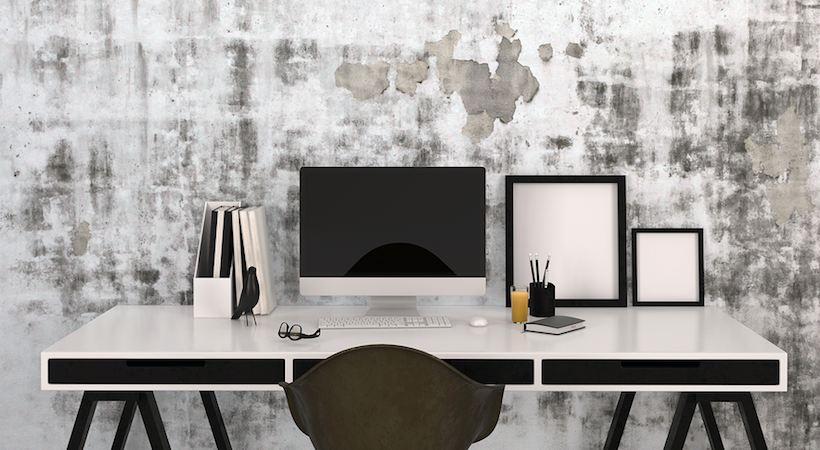Each year, more Americans are working remotely than ever before. An early 2020 Flexjobs study shows that in 2015, 3.9 million U.S. workers were working remotely. Today that number is at 4.7 million, or 3.4 percent of the population.
It makes sense that more employers and employees are choosing remote work. Telecommuting has been proven to increase employee satisfaction, in turn boosting productivity and retention rates.
Here are a few of the benefits of working from home:
- No commute: Working from home saves both time and gas money
- Flexible schedule: While this is not true in every case, telecommuting positions typically offer a more flexible schedule, which in turn makes it easier to create a healthy work/life balance
- Less stress: Working from home has been proven to reduce stress levels in workers. According to one 2014 study by PGi, 82 percent of telecommuting workers reported reduced stress
However, remote work situations are far from perfect. When you start working from home, you’ll encounter a few unexpected challenges. For example, you may find that you’re lonely or more readily distracted when you’re working from home. You might discover that while it’s easier to find a balance between life and work, it is more difficult to keep the two separate.
I have been telecommuting full time for almost a year now. After much trial and error, I’ve discovered a few ways to minimize the challenges of working from home, while taking full advantage of the benefits.
Here are my top four tips for freelancers, entrepreneurs and employees who spend most of their time working from a home office:
Related: Tips for Finding Successful Remote Employees
Set regular hours
You’ll find this piece of advice in every article ever written about working remotely, and it’s there for a reason. When you’re working from home, it’s easy to get distracted. There’s always laundry to do, dishes to be washed and friends who want to “just visit for lunch.” Setting a regular schedule (even when you don’t have to) is one of the best ways to ensure that you stay on task.
Establish reasonably strict work hours during which you are unavailable to family and friends, and resist the temptation to do housework during those hours. Build in coffee breaks and lunch breaks, and do your best to get back to work on time.
This regular routine will help you get your work done faster and will communicate to your loved ones that although you are at home, you still have a “real job” that requires your time and attention.
Create mental space between work and home
One of the biggest challenges of working from home is maintaining distance between work and home life. It’s hard to leave work at the office when the office is just two steps away!
If you’re working with limited space (for example, your office is tucked into a corner of your bedroom), this can be especially difficult. Fortunately, using a few simple tips, you can trick your brain into thinking that your office is much further away than it actually is:
- Work from your desk, and only at your desk: Sleep hygiene experts and educational professionals have long noted the connection between location and brain function. The human brain is quick to associate different tasks with different locations, which is why working on your bed is detrimental to both your work and your sleep. To combat distractedness, make sure that you work exclusively at your desk and that you take all restful activities elsewhere. This will help your brain associate your desk with your work, which will boost your productivity. In addition, keeping your work closely tied to your desk will help you “leave the office” when you’re done for the day.
- Be strategic with your lighting: Obviously, it’s very important that your workspace be well lit. But if you’re working and living in the same room, it is also important that your workspace be differently lit. By this, I mean that you should use different lighting during your work hours and your rest hours. Just lighting a room differently can make one room feel like two.
Optimize your desk setup
Ergonomics are critical in every work environment. When you work in an office building, your setup is taken care of for you. You likely have a standard issue desk, an office chair and a nice, big computer monitor.
When you work from home, however, setting up an ergonomic workspace is your responsibility. It can be tempting to just work from your laptop at whatever table is available; however, you’ll quickly realize that working outside of the proper setup can be harmful to your eyes, back, neck, wrists and shoulders.
Instead, you should dedicate a bit of time to finding the right tools to optimize your setup. Make sure you have the following:
- A desk with a keyboard drawer: Using a desk with a lower keyboard tray lets you sit with your arms at a 90-degree angle, reducing wrist strain
- A good office chair: You don’t need to go out and buy a $600 faux leather throne, but you should be working in something a little better than a kitchen chair. If you don’t already have a chair with good lumbar support, look around for one
- An external keyboard and mouse: Improve your wrist position by using an external keyboard and mouse. You can find these items at any office supply or tech store for $20 to $40. If you still have wrist pain using a traditional mouse, you should try a vertical mouse, which keeps your wrist in a much more natural position
Optimizing your workspace is an investment in your health and work. Removing the distractions related to a subpar setup can dramatically improve your productivity and help you put in those long hours when you need to (without killing your back).
Find time to work away from home
As anyone who has worked remotely knows, it can be difficult to spend so much time alone. Even introverts will admit that keeping to yourself for eight hours each day can be draining.
Do your best to interact with people on a regular basis. For some, this might entail a quick phone call to a coworker. For others, it could be a brief walk through the neighborhood during your break.
In my own work, I’ve found that I feel best when I spend at least one afternoon a week out of the house. Just taking my laptop (and my vertical mouse) to a coffee shop for a few hours alleviates some of the monotony and loneliness that can build up when you spend every day inside of your own house.
So go out and find somewhere you like to work. Become a regular at your local cafe or library. It can work wonders for your emotional wellbeing.
Sign Up: Receive the StartupNation newsletter!
Figure out what works best for you when working remotely
As you try out these tips, you may find that some strategies work great, and others aren’t quite as successful. And that’s fine! Fortunately, as a telecommuter, you have the ability to customize your work environment and routine to fit your needs. So, as you try each technique, keep your own preferences and work style in mind. Customize each strategy to fit you, and see where it takes you.






